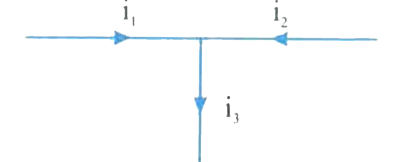Out of the following functions representing motion of a particle which represents SHM
I. y=sinωt−cosωt
II. y=sin3ωt
III. y=5cos(3π4−3ωt)
IV. y=1+ωt+ω2t2
Only (IV) does not represent SHM
(I) and (II)
(I) and (III)
Only (I)
The correct Answer is:B
Step by step video, text & image solution for Out of the following functions representing motion of a particle which represents SHM I. y = sin omega t - cos omega t II. y = sin^(3)omega t III. y = 5 cos ((3 pi)/(4)-3 omega t) IV. y = 1 + omega t + omega^(2)t^(2) by Physics experts to help you in doubts & scoring excellent marks in Class 12 exams.
Updated on:21/07/2023Topper's Solved these Questions
- OPTICS AND OPTICAL INSTRUMENTSBOOK - NEET PREVIOUS YEAR (YEARWISE + CHAPTERWISE)CHAPTER - OPTICS AND OPTICAL INSTRUMENTSEXERCISE - All Questions
87 Videos
- PHYSICAL WORLD AND MEASUREMENTBOOK - NEET PREVIOUS YEAR (YEARWISE + CHAPTERWISE)CHAPTER - PHYSICAL WORLD AND MEASUREMENTEXERCISE - Physical
41 Videos
Similar Questions
Knowledge Check
Out of the following functions representing motion of a particle which represents SHM :
(A) y=sinωt−cosωt
(B) y=sin3ωt
(C ) y=5cos(3π4−3ωt)
(D) y=1+ωt+ω2t2AOnly (A) and (B)BOnly (A)COnly (D) does not represent SHMDOnly (A) and (C )Position of a particle varies as y=cos2ωt−sin2ωt. It is
Aharmonic but not SHMBSHM with period (πω)CSHM with period (2πω)Dperiodic with period (πω) but not SHM.The motion of a particle is given by x=Asinωt+Bcosωt. The motion of the particle is
Anot simple harmonicBsimple harmonic with amplitude A + BCsimple harmonic with amplitude (A+B)2Dsimple harmonic with amplitude √A2+B2
The r.m.s. value of I=I1sinωt+I2cosωt is
View SolutionFour functions given below descirbe motion of a particle.
(I)y=sinω−cosωt,(II)y=sin3ωt,
(III) y=5cos(3π4−3ωt),(IV)y=1+ω+ω2t2
Therefore, simple harmonic motion is represented by
View SolutionThe motion of a particle is given by
y=asinωt+bsinωt
The motion of the particle is
View SolutionCurrent in an ac circuit is given by I=3sinωt+4cosωt, then
View SolutionThe displacement of a particle varies with time according to the relation y=asinωt+bcosωt.
View Solution

